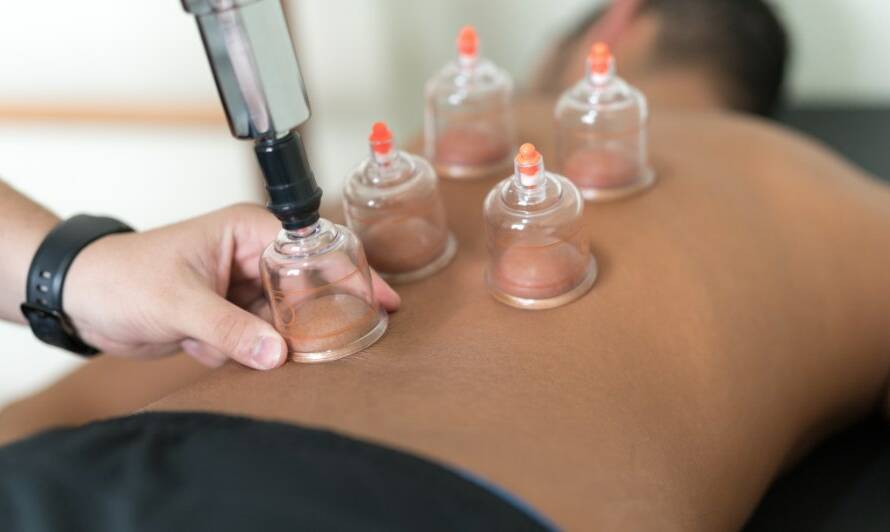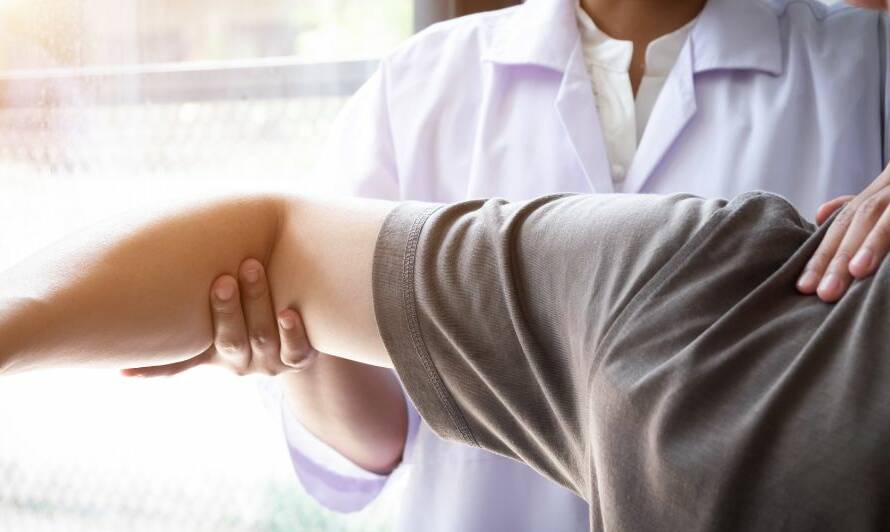Graston Therapy and Cupping are two types of alternative therapies that have gained popularity in recent years. The Graston technique (a form of IASTM) involves the use of specialised tools to break up scar tissue, adhesions, and other soft tissue restrictions, while cupping therapy uses suction cups to release tension and promote healing. While both therapies can be used independently, they can also be used in combination to enhance outcomes. In this article, we will dive deeper into the world of Graston Therapy and Cupping, exploring their benefits, how they work, and comparing them to other types of therapies.
Introduction to Graston Therapy and Cupping
Graston Therapy (aka Gua Sha) and Hijama Cupping are two popular manual therapy techniques used to treat pain and dysfunction in the body. They utilize specialized tools and cups to manipulate the soft tissues of the body and improve circulation, alleviate pain, and speed up the recovery process. In this article, we’ll explore the history, benefits, and applications of both Graston Therapy and Cupping, as well as how they work together.
Defining Graston Therapy and Cupping
Graston Therapy is a form of manual therapy that involves using stainless-steel instruments to manipulate and break up scar tissue, adhesions, and fascial restrictions in the body. This technique can be applied to any area of the body, such as the neck, back, arms, and legs, and helps to improve range of motion, reduce pain, and increase function. Some refer to this technique as muscle scraping or gua sha too.
Cupping Therapy, on the other hand, involves placing inverted cups on the skin to create a vacuum effect. This suction stimulates blood flow and promotes the release of toxins and tension from the muscles. Cupping can be used to treat a variety of conditions, including chronic pain, inflammation, and respiratory issues.
The History of Graston Therapy and Cupping
Graston Therapy was developed in the 1990s by Dr. James Graston, a sports medicine physician, who wanted to find a way to rehabilitate soft tissue injuries more effectively. He created a set of specialized instruments that allowed therapists to treat soft tissue pain and dysfunction with greater precision and effectiveness.
Cupping Therapy has been around for centuries and is a popular form of traditional Chinese medicine. It was originally used to treat respiratory issues like pneumonia and bronchitis, but has since been used to treat chronic pain, musculoskeletal conditions, and stress.
Understanding Graston Therapy
What is Graston Therapy?
Graston Therapy involves using handheld instruments made of stainless steel to break up scar tissue and adhesions in the body. These instruments come in various shapes and sizes and are used to apply targeted pressure to the affected area. The efficacy of instrument assisted soft tissue mobilisation
How Graston Therapy Works
Graston Therapy works by breaking down scar tissue and adhesions in the soft tissues of the body. Scar tissue and adhesions can impair range of motion, create pain, and limit function. The specialized instruments are used to detect and treat areas of fibrosis to improve the function of the soft tissues.
Conditions Treated with Graston Therapy
Graston Therapy can be used to treat a wide range of conditions, including carpal tunnel syndrome, plantar fasciitis, tendonitis, and chronic pain. It is particularly effective for treating soft tissue injuries in athletes or individuals who engage in repetitive activities. Please see our Cupping/Graston treatment plans if you are interested in Graston therapy.
Understanding Cupping Therapy
What is Cupping Therapy?
Cupping Therapy involves placing cups on the skin to create suction, which increases blood flow, promotes healing and relaxation, and reduces pain and inflammation.
How Cupping Therapy Works
Hijama Cupping Therapy works by creating a vacuum effect on the skin that stimulates blood flow and encourages lymphatic drainage. This suction also helps to release tension in the muscles and fascia, alleviating pain and stiffness.
Conditions Treated with Cupping Therapy
Cupping Therapy can be used to treat a variety of conditions, including chronic pain, migraines, respiratory issues, and stress. It is also commonly used by athletes to improve muscle recovery and boost performance.
How Graston Therapy and Cupping Work Together
What are the Benefits of Combining Graston Therapy and Cupping?
When used together, Graston Therapy and Cupping can have a synergistic effect on the body. Cupping helps to warm up the tissues and increase blood flow, making it more effective when used before Graston Therapy. Graston Therapy can then be used to break up scar tissue and adhesions, allowing the tissues to function more efficiently.
How to Incorporate Graston Therapy and Cupping into a Treatment Plan
When incorporating Graston Therapy and Cupping into a treatment plan, therapists may use Cupping Therapy before Graston Therapy to warm up the tissues and increase blood flow. They may also alternate between the two techniques, using Cupping Therapy to release tension and Graston Therapy to break up scar tissue and adhesions. The overall goal is to create a personalized and effective treatment plan that addresses the needs of each individual patient.
Benefits of Graston Therapy and Cupping
Graston therapy and cupping are two popular forms of alternative therapies used to treat a range of health conditions. Let’s explore the benefits of these two therapies.
Reduced Pain and Inflammation
Graston therapy and cupping are both effective at reducing pain and inflammation in the body. Graston therapy involves using specially designed metal tools to break up scar tissue and adhesions in the muscles, tendons, and ligaments, while cupping involves placing cups on the skin to create a suction effect that stimulates blood flow and reduces inflammation.
Improved Range of Motion and Flexibility
Graston therapy and cupping can also help improve range of motion and flexibility in the body. By breaking up scar tissue and adhesions, Graston therapy can help restore proper movement patterns and improve joint mobility. Cupping can also help release tension in the muscles and improve flexibility.
Enhanced Recovery and Healing
Both Graston therapy and cupping can enhance recovery and healing from injuries or chronic health conditions. Graston therapy can improve blood flow to the affected area, which can increase oxygen and nutrient delivery to the tissues, while cupping can help flush out toxins and promote circulation.
Considerations Before Practicing Graston Therapy and Cupping
Before trying Graston therapy or cupping, it’s important to consider whether these therapies are right for you and to be aware of any contraindications or precautions.
Is Graston Therapy and Cupping Right for You?
Graston therapy and cupping may not be suitable for everyone. If you have any medical conditions or injuries, it’s important to consult with your healthcare provider before trying these therapies.
Contraindications and Precautions to Consider
There are also certain contraindications and precautions to consider before trying Graston therapy and cupping. For example, cupping should not be performed on people with skin conditions or if you are pregnant, and Graston therapy should not be performed on broken skin or if you have a bleeding disorder.
Comparing Graston Therapy and Cupping to Other Therapies
While Graston therapy and cupping may have some similarities, they are also distinct from other forms of alternative therapies.
Difference Between Graston Therapy and Massage Therapy
Graston therapy is more focused on breaking up scar tissue and adhesions in the muscles, tendons, and ligaments, while massage therapy is more focused on relaxation and releasing tension in the muscles.
Difference Between Cupping Therapy and Acupuncture
Hijama Cupping therapy involves using cups to create a suction effect on the skin, while acupuncture involves inserting needles into specific points on the body to balance energy flow.
Conclusion and Final Thoughts on Graston Therapy and Cupping
Graston therapy and cupping are both effective forms of alternative therapies that can provide numerous health benefits. However, it’s important to consider whether these therapies are right for you and to be aware of any contraindications or precautions. In the future, more research is needed to explore the full potential of these therapies and their effectiveness for treating a range of health conditions. In conclusion, Graston Therapy and Cupping are two effective alternative therapies that have been shown to provide relief for a variety of conditions. While there are some considerations and contraindications to keep in mind, these therapies have the potential to improve pain and inflammation, increase range of motion and flexibility, and enhance recovery and healing. By understanding these therapies and their benefits, you can begin to explore whether they are right for you and your health goals.
Frequently Asked Questions
Is Graston Therapy and Cupping Painful?
Most people report feeling some discomfort during Graston Therapy and Cupping sessions, but it should not be unbearable. The level of discomfort can vary depending on the person’s pain tolerance and the severity of their condition. However, it is important to communicate with your therapist throughout the session to ensure that the pressure and intensity is within your comfort level.
How Many Sessions of Graston Therapy and Cupping are Needed?
The number of sessions needed varies depending on the person’s condition and overall health goals. Some people may see improvement after just one session, while others may need a series of sessions to achieve the desired outcomes. It is best to consult with your therapist to develop a treatment plan that is tailored to your individual needs.
What are the Contraindications to Graston Therapy and Cupping?
While Graston Therapy and Cupping are generally safe, there are some contraindications to keep in mind. These include pregnancy, open wounds, severe varicose veins, and certain skin conditions. It is important to discuss any health concerns or conditions with your therapist before beginning treatment.
How Do Graston Therapy and Cupping Compare to Other Types of Therapies?
Graston Therapy and Cupping are often compared to other types of therapies, such as massage therapy and acupuncture. While there are similarities between these therapies, there are also important differences. For example, Graston Therapy and Cupping are more focused on treating soft tissue restrictions and tension, while massage therapy focuses on overall relaxation and tension relief. Acupuncture, on the other hand, uses needles to stimulate specific points on the body to promote healing and balance. It is important to research and consider all options before deciding which therapy is best for you.





2 Comments
Trista
Wow, awesome blog layout! How lengthy have you been running a blog
for? you made blogging glance easy. The whole glance of your
web site is magnificent, let alone the content
material! You can see similar here najlepszy sklep
Deandre
Wow, fantastic blog layout! How long have you ever been running
a blog for? you made running a blog glance easy.
The total look of your site is excellent, let alone the content!
You can see similar here ecommerce